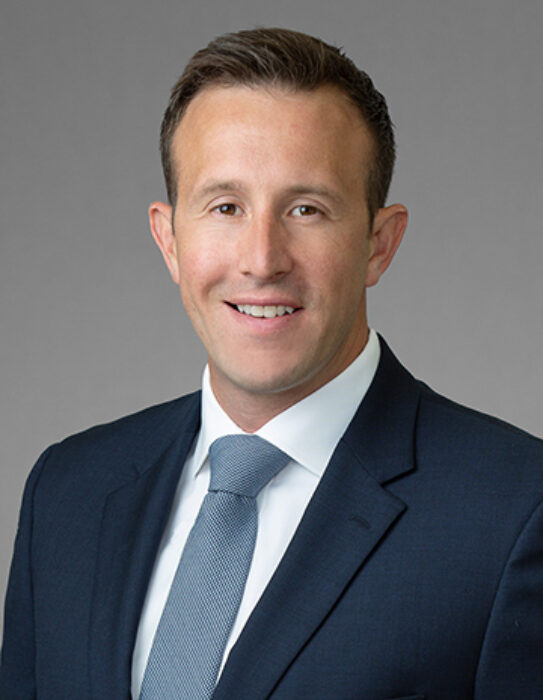E&P Hedging Alternatives During The Bankruptcy & Restructuring Process

The purpose of a risk management program is to protect a plan or a path forward. Upstream companies face a variety of business risks that could limit their progress towards achieving a plan, particularly as commodity prices remain volatile and depressed. The spectrum of business risks is wide, including cash flow risk, regulatory risk, human capital risk, etc. However, the value proposition for upstream companies is relatively straightforward, which is to search for, develop, and extract hydrocarbons. In doing so, upstream companies must have enough cash flow not only to support a level of capital expenditures and exploration activity to ensure that oil and gas continue to flow, but also to make debt payments, comply with debt covenants, and support the general and administrative costs associated with running any commercial enterprise. Hedging programs at upstream companies are developed with the primary purpose of providing a level of cash flow to increase the likelihood of meeting those needs and helping avoid insolvency.
Without the protection of an effective hedging program, an upstream company’s cash flows are subject to the volatility of the market. An upstream company without hedges in place will benefit from higher market prices, but they have a very short amount of time to react when market prices decline. This is a predicament many upstream companies have experienced during the most recent price downturn. Some companies liquidated their entire hedge portfolios around $65/barrel under the belief that the price could not go any lower, or they converted their existing portfolios of swaps to short three-way options (purchased put, sold call, and sold put) burdened with a trap door in the strategy where there is no longer downside protection below the sold put level. The absence of hedges is contrary to the risk management objective of providing a baseline amount of cash flows for operations, and the use of short three-way options is particularly risky under the leveraged model that most upstream companies utilize.
The leveraged upstream model became the norm for upstream companies over the past few decades. Previously, many upstream companies largely funded their drilling programs through production cash flows. During this time, however, drilling programs have been increasingly funded with debt, as many lenders were willing to lend to upstream companies as long as they hedged a significant portion of the production. Thus, hedging programs became a critical part of an upstream company’s operating plans in order to give lenders some assurance and predictability with respect to future cash flows.
That being said, hedging programs are not a permanent fix when price declines continue for a long period of time. Regardless of the strategy executed, many upstream companies with attractive hedging portfolios were only required to hedge twelve to twenty-four months of their future production, which shielded many upstream companies during 2015. But with the price downturn starting in November 2014, most of those valuable hedges will be expiring in the next three to nine months if they have not already been liquidated.
With demand for crude oil remaining steady and supply levels remaining high, many believe it will be a slow road to price recovery. This has left upstream companies considering the following alternatives to weather the downturn:
- Negotiating/restructuring debt agreements and capital structure out of court (e.g., tender offers, exchanges, conversions, etc.)
- Acquiring new, cash generating assets with equity infusions
- Borrowing additional funds
- Selling assets to raise cash
- Filing for bankruptcy
Given expectations for continued Chapter 11 filings from upstream companies, the following discussion focuses on what happens to the hedging program during the bankruptcy process.
In its simplest form, and for the purposes of this discussion, we will assume there are three constituents in the restructuring or bankruptcy process. There is a debtor, the upstream company, and typically two classes of creditors, those who are secured and those who are not. The secured creditors (e.g., reserve-based lenders and second and third lien lenders) have loaned money against some form of collateral owned by the debtor. This collateral is largely the developed or undeveloped production reserves of the company, though it often includes other assets, including cash, hard assets, and undeveloped acreage. Unsecured creditors have loaned money to the debtor, but the debts are not secured by collateral. These creditors generally include bondholders and certain vendors.
Although many upstream companies will work with their stakeholders to address covenant defaults, cash flow constraints, over-leverage, and other areas of financial and operational distress, bankruptcy is often the only choice available to companies seeking to restructure their balance sheet. This can happen for a number of reasons. Sometimes no consensus can be reached between the debtor and its stakeholders where individual stakeholders are at odds with respect to the distribution of value and cash flow. There are also instances when an objective can only be accomplished within a court-supervised restructuring process, in order to reject or avoid certain other liabilities or contracts necessary to effectively recapitalize the company. Consensual, out-of-court restructurings are often cheaper and more efficient but are simply not a realistic option in many cases.
In understanding the alternatives for addressing a company’s hedging program prior to any bankruptcy filing, it is helpful to first understand what happens to the hedging program after a bankruptcy filing has occurred. If an upstream company is not able to meet its interest payments, principal payments, or debt covenant requirements and cannot enter into forbearance, waiver, or amendment necessary to strike a global, out-of-court restructuring deal, then the company runs the risk of default and creditors taking remedial action. In order to avoid creditors taking remedial action, the company can file for protection under Chapter 11 of the bankruptcy code. The moment that a bankruptcy petition is filed, the company receives protection in the form of an “automatic stay” that effectively halts a creditor’s ability to collect debts, seize assets, or otherwise exercise control over the debtor and grants the debtor the exclusive right to propose a restructuring plan for at least four months following the date of the bankruptcy filing. There are important exceptions to the automatic stay, particularly in the case where counterparties to derivative contracts are able to terminate the derivative contracts and seize any cash collateral associated with the termination of the contracts to the extent they are owned money.
The intent of the bankruptcy process is to attempt to rehabilitate the debtor and to maximize the value available to stakeholders on the basis of their statutory entitlement to recovery. This entitlement to recovery is based on each obligation’s relative level of priority in the capital structure.
If it is determined that a recapitalization of the debtor is not possible, sale and liquidation options exist with the distribution of proceeds similarly allocated on the basis of priority. However, during the bankruptcy process, an “automatic stay” prevents any individual creditor from extracting its collateral, no matter how senior, to the detriment of the rest of the bankruptcy estate. Basically, the “automatic stay” is intended to protect the total value of the bankruptcy estate while rehabilitation plans are made, but there is an exception where the derivatives can be terminated, which is why derivative contracts are typically terminated at filing.
Companies contemplating filing for bankruptcy or an out-of-court restructuring must first consider what can be done with their existing hedging program. The three alternatives are:
- Do nothing at all
- Liquidate the hedging program
- Execute new hedges
If the hedges are an asset to the debtor, liquidating the existing hedges can be an attractive alternative to increase cash reserves, but it comes at a cost. The counterparties will generally charge significant fees, directly or indirectly, to liquidate hedges. The liquidation value many companies are getting in this environment is often 25-35% less than what was is reported on the counterparty’s mark-to-market reports. In addition, there would no longer be any hedges in place to protect cash flows unless the company executes new hedges. When putting on new hedges, the distressed company would likely be in a weaker negotiating position for new trades as the counterparty would adjust the strike prices of the hedges to compensate for the increased credit risk. Companies should also be cautious when executing new trades, as some counterparties may effectively embed loans inside the derivative contracts knowing they could potentially liquidate the trades at the filing of a petition, even though the ability of a counterparty to offset hedges against a lender’s existing exposure has yet to be meaningfully tested in the bankruptcy courts.
Generally, for an upstream company, the secured lender group represents the counterparties to the derivative contracts. In the event of financial distress, other classes of creditors will be cautious of allowing upstream companies to execute additional hedges as the derivative contracts can potentially represent additional exposure, although the benefits associated with cash flow certainty may outweigh the costs of allowing this additional exposure. A derivative’s fair value can be an asset or a liability to the debtor, which, conversely, makes a derivative contract a liability or an asset to the creditor, respectively. If the derivative is an asset to the secured creditor, the secured creditor may be indifferent to whether the contracts are terminated because they represent additional funds the debtor owes the secured creditor and a near-term certainty of some recovery to that secured creditor given repayment of the obligation at termination. If the contracts are a liability to the creditor, where the creditor owes the debtor for future settlement, the creditor may prefer to terminate the agreements and receive the value of the derivatives against the amount that the debtor owes the creditor. Some lenders are agnostic to the value of the derivatives as an asset or a liability. They view the derivative contracts as uncertainty, and they want to lock in their total exposure as soon as possible.
Though a robust hedging program may not be sufficient to stave off a filing, it can certainly help provide certainty of liquidity. The cornerstone purpose of an effective hedging program is to increase the predictability of future cash flows, which is of critical importance in avoiding bankruptcy. A hedging program helps mitigate the downside risk associated with volatile commodity revenue, provides visibility into critical performance metrics, and can help ensure that baseline levels of cash flow are achieved. Management should carefully consider various hedging strategies and their ability to help companies remain in compliance with their debt obligations under these challenging conditions.
The following tables represent a sample analysis that sets forth the amount the forward strip can move while still allowing an upstream company to maintain compliance with its leverage covenant under various hedge strategies and under different coverage levels of hedged production. This analysis is particularly beneficial to management teams as they consider various hedging strategies. It allows management to understand the degree of participation in market movements under various strategies and forecasted production levels combined with debt compliance. The analysis is also helpful in building a business case for hedging in post-bankruptcy situations. Finding counterparties willing to execute post-bankruptcy can be challenging, but there are alternatives available that allow companies to execute hedges.
In summary, the prolonged decrease in energy prices is causing financial distress for many upstream companies. The implementation of an effective hedging program can be a tool that helps ensure certainty of cash flow and perhaps avoid having to file for bankruptcy. Management teams are encouraged to consider the various alternatives and strategies that a hedging program can provide in meeting their ever-changing business plans. Opportune is the premier hedge advisory and restructuring financial advisory firm for the upstream energy sector. Our professionals offer the unique understanding of the hedging and bankruptcy processes that allow us to present alternatives that meet the needs of upstream companies during these volatile times.
Related Insights
Our experts are here
for you.
When you choose Opportune, you gain access to seasoned professionals who not only listen to your needs, but who will work hand in hand with you to achieve established goals. With a sense of urgency and a can-do mindset, we focus on taking the steps necessary to create a higher impact and achieve maximum results for your organization.
LeadershipGeneral Contact Form
Looking for expertise in the energy industry? We’ve got you covered.
Find out why the new landmark legislation should provide a much-needed boost for the development of carbon capture.






